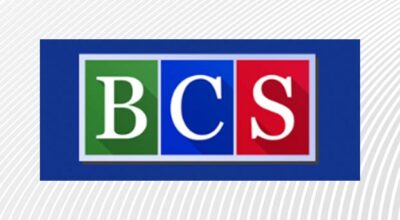Waiver brings changes to No Child Left Behind
Published 8:10 pm Monday, June 18, 2012
Some Beaufort County’s public-school students will see changes when they return to school in August as a result of a waiver granted last month to North Carolina from some provisions of a federal education law.
The county’s public schools will no longer have to measure student accountability under a provision known as “adequate yearly progress,” a part of the Elementary and Secondary Education Act, also known as No Child Left Behind.
“This is going to be a good thing in the long run for the students of Beaufort County,” said Greg Singleton, director of federal programs for Beaufort County Schools.
Signed into law on Jan. 2, 2002, No Child Left Behind requires states to annually administer standardized tests. It requires districts and individual schools that receive Title I federal funding to make “adequate yearly progress” in those test scores or face sanctions. Schools receive Title I funds based on the percentage of their student enrollments that qualify as low-income.
Under No Child Left Behind, schools evaluate students according to race, family income, English proficiency and other factors and set individual targets for each of these groups.
Schools with diverse populations had more subgroups and, therefore, had to meet a higher number of AYP goals. If just one of those subgroups failed to meet AYP targets, the school was designated as having failed to meet AYP.
This all-or-nothing approach to goals led educators nationwide and members of President Obama’s administration to consider broad changes in how schools are judged to be succeeding or failing under No Child Left Behind, as well as for the elimination of the law’s 2014 deadline for bringing every American child to academic proficiency.
Because Congress has, to date, failed to agree on reauthorization of the Elementary and Secondary Education Act that would address these concerns, the U.S. Department of Education has begun granting waivers from some provisions of the law.
In May, North Carolina was one of eight states granted a waiver, bringing the total number of states granted waivers to 19, according to news reports.
No Child Left Behind sanctions include offering students the choice to attend another school, providing supplemental educational services at no cost to qualifying students and other measures.
The waiver means the elimination of the school-of-choice sanction for four Beaufort County Schools — S.W. Snowden, Eastern, John Cotten Tayloe and John Small elementary schools.
As a result, families of about 40 children who chose to attend another school will have to decide whether to keep those children at their schools of choice or return their children to their original schools.
The students may choose to remain at their current school through the highest grade at that school, but Beaufort County Schools will no longer have to provide transportation for those students, Singleton said.
Letters notifying them of the change are expected to be mailed to those families in the coming weeks, he said.
The waiver also means the school district will not longer have to provide supplemental education service, which required Beaufort County Schools to hire tutors to provide additional course work for low-income students in the sanctioned schools.
As a result of these two changes, the school district will save about $225,000, or about 10 percent of the $2.2 million it receives from the federal government through Title I, Singleton said.
“This is money that otherwise could have been better used for district-wide initiatives or other academic programs,” he said.
The waiver will not mean the end of accountability for the state’s public schools, Singleton said.
Schools will not have to meet adequate yearly progress, which mandated a 100-percent proficiency goal for every group of students by 2014. Instead, they will now have to reach annual measurable objectives, Singleton said.
Using the same categories as under adequate yearly progress, annual measurable objectives set targets for groups of students based on the performance of those groups of students on tests taken during the 2010-2011 school year.
Under the new model, each group of students at a school in North Carolina will be expected to improve on reading and math test scores by a designated amount each year, a move intended to eliminate the achievement gap between groups of students by the end of the 2016-2017 school year, Singleton said.
“Everybody has to improve, but they don’t all have to meet the same targets or grow at the same rate,” he said.
This closely resembles proficiency targets required under North Carolina’s ABCs of Public Instruction, which measures the academic growth of students and recognizes schools based on their results.
In addition to performance standards for students, the new model will rank schools in three categories — reward, for the highest performing schools; focus, for those schools having an above-average achievement gap between groups of students; and priority, for consistently low-performing schools.
In Beaufort County, Chocowinity Primary School has been designated as a “reward” school while John Small Elementary School has been designated as a “focus” school. No Beaufort County school received the “priority” designation.
As a result, the school district will be required to set aside funds to address the achievement gap at John Small Elementary School. Chocowinity Primary School will be eligible for additional funds to reward the school for its performance, Singleton said.





